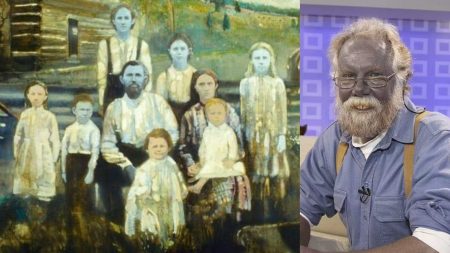What is NIPAH Virus or NiV? Why is it called NIPAH? What are its symptoms and cure? How is this virus spread & from where it comes to India?
Recently, 10 people died in Kozhikode (Calicut) district in Kerala due to NIPAH Virus, also known as NiV. First three victim of this virus belongs to the same family.
They get affected by this virus when they drink water from a well which has a dead bat in it. High alert is declared by the Kerala Health Ministry.
A few days back a nurse surrender herself to this deadly virus while treating the first victim of this virus in Kerela.

Nurse Lini Puthussery leaves a note for husband as she was not allowed to meet anyone. She wrote:
Sajeeshettam
Am almost on the way… Don’t think I will be able to meet you. Sorry. You should look after our children well. Poor Kunju, you should take him to the Gulf once. Should not be alone like our father. Plz… With lots of love.
She died in the isolation chamber of the hospital and her body was cremated without her family around.
So what is NIPAH Virus? Why is it called NIPAH Virus? Why is it so deadly? How is this virus spread? How the patient infected with this virus can be cured?
All these questions are answered subsequently below:
Table of Contents
What is NIPAH Virus?
Before getting into the details of this virus, let me tell you about zoonosis (पशुजन्य रोग).
It is basically a disease that is transmitted from animals to human beings. More specifically, it is a disease that exists in animals that can infect humans.

NIPAH Virus or NiV is a zoonotic disease. As per the WHO (World Health Organisation), fruit bats of the Pteropodidae Family, Pteropus genus are the natural host of this virus.
NiV is also capable of causing disease not only in humans but also in pigs and other animals.
Human to human transmission is also observed in case of NIPAH Virus in a hospital in India. This is the most threatening fact about this virus which makes it so deadly.
The death of nurse Lini Puthussery is due to this human to human transmission of the virus from the infected patient.
Therefore precautions are taken by hospital staff including doctors and nurses while taking care of the infected patient.
MUST READ: Why Taj Mahal is turning Yellow and Green? – These are the reasons
Why is it called NIPAH Virus?
This virus gets its name from a village in Malaysia named “Kampung Sungai Nipah” where it is first recognized in a large outbreak of the disease in 1998.
In that case, pigs were the intermediate hosts. First pigs were infected with this virus. And subsequently, when humans came into the contact of these sick pigs, they also get affected.
But in all the other cases like in Bangladesh in 2004, there were no intermediate hosts.
In case of Bangladesh, people get affected due to the consumption of date palm sap that has been contaminated by the infected fruit bats.
In Southeast Asia region, Nipah virus outbreaks have been confirmed in Bangladesh in 2001, 2003 and 2007, and in India in 2001(in Siliguri, West Bengal) and 2007 (in Nadia, West Bengal).
So this is not the first time, that the cases of this virus are seen in India.
How does NIPAH Virus spread or get transmitted?
As we have discussed above that this virus is spread by the infected fruit bats. But how?
Fruit bats are also known as “flying foxes”. These feeds exclusively on fruits, nectar and flowers.
The virus is present in the bat urine and possibly in bat saliva, wastes and birthing fluid.
So when these infected bats eat or their discharge came in contact with fruits, this virus gets transmitted to the fruit.
And when that infected fruit is either eaten by humans or they came in contact with it, they also get infected by NIPAH Virus.
One thing to note is that the Nipah virus cannot be spread through the air. Instead, it is transmitted through contact and bodily fluids.
Symptoms of NIPAH Virus and why it is so deadly:
During the infection, both respiratory and nervous system of the human body gets affected.
Typically, the patient infected with this virus shows encephalitic and myocarditis syndrome. Encephalitis is the inflammation of the brain and myocarditis is the inflammation of the heart.
This syndrome is marked by fever, headache, drowsiness, disorientation, mental confusion, coma and potentially death.
The fatality rate of this virus is ranging from 40 to 75%. It means that if a patient gets affected by this virus, there are 40 to 75% chances, that the patient will die.
During the outbreak in Malaysia, around 50% of patients died due to this deadly virus.
As per WHO, “NiV infection in humans has a range of clinical presentations, from asymptomatic infection to the acute respiratory syndrome and fatal encephalitis.“
CDC (Centers for Disease Control and Prevention) also list is as a potential biological weapon because of its availability, ease of production and distribution, and high virulence in terms of high mortality and health impact.
MUST READ: Hyperloop in India – Mumbai to Pune in just 20 minutes with speed of 1000 km/hr
How the patient infected with NIPAH Virus or NiV can be cured?
As of now, there is no specific treatment or cure available for NIPAH Virus. There is no vaccine available for either humans or animals.
Anyone who is suspected to be affected is isolated so as to prevent the transmission of infection.
The patient is admitted to ICU and intensive supportive care is provided in hope that the symptoms will eventually go away and the patient will be cured.
As a precaution, if you live in the affected regions, don’t go near the forest or places where these bats are found.
If you have a problem with breathing or having a headache for a long period of time, then please consult the nearby doctor.
Share this article with your friends and family members so that they also get informed about this virus.







